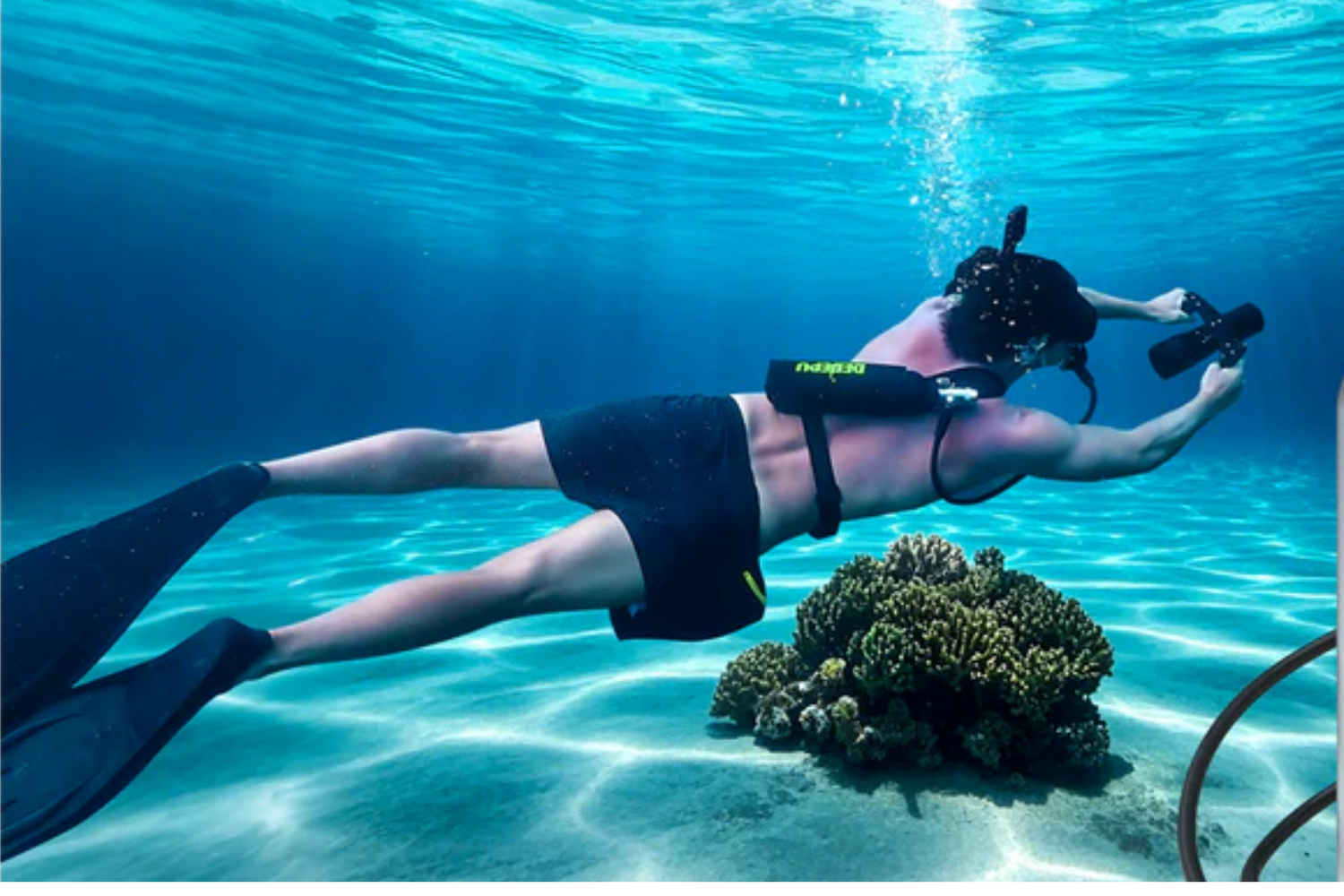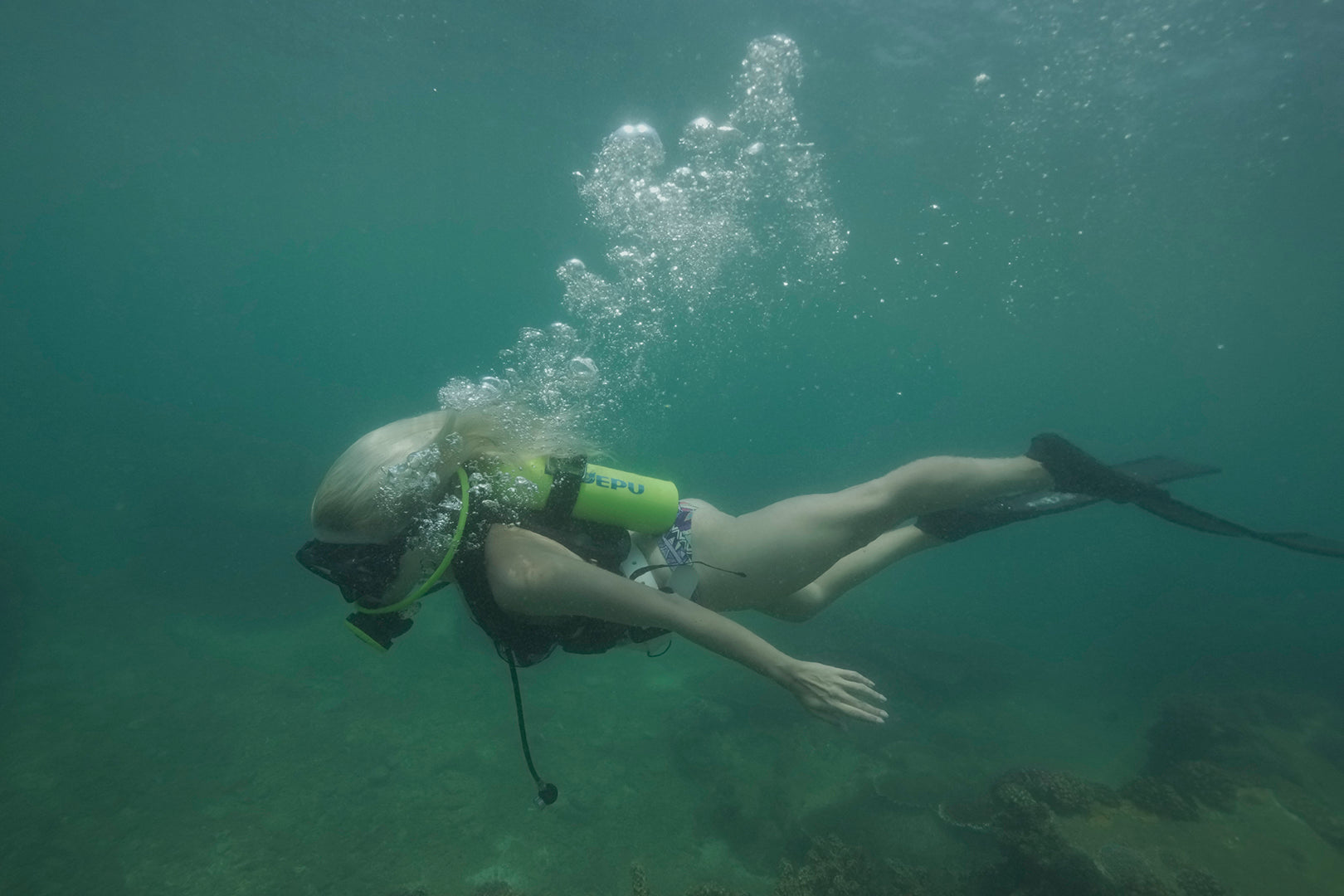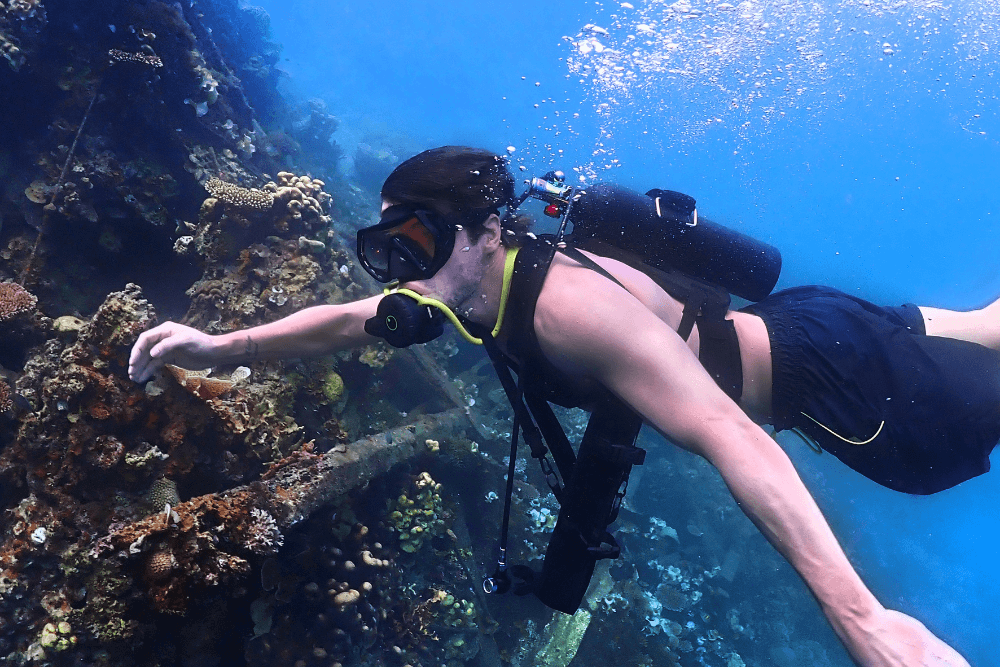Every tank displays a critical Working Pressure (WP), typically stamped near its valve in Bar or PSI. Common standards are 200 Bar (approx. 3000 PSI) for modern tanks, though steel tanks may hold 232 Bar (~3400 PSI), while aluminum often maxes at 207 Bar (~3000 PSI). Filling requires slow, staged compression using specialized filtered air systems (ISO 8573-1 Class 3 air purity standard) to prevent dangerous overfilling. Key factors are never exceeding the tank's marked WP, allowing pressure to drop ~10-15% as the tank cools post-fill, and performing required visual inspections & hydrostatic tests every 5 years.
The Standard Fill Rule
Scuba tank pressure isn't arbitrary; it's governed by strict engineering standards measured in two units: PSI (pounds per square inch) and Bar. Roughly 80% of recreational tanks outside the U.S. use Bar for its metric precision, while U.S. operations predominantly rely on PSI. The conversion is foundational: 1 Bar equals exactly 14.5038 PSI, meaning a standard 200 Bar tank holds 2,900 PSI (±58 PSI tolerance per ISO 9809 manufacturing guidelines). The stamped Working Pressure (WP)—visible within 5–7 cm of the tank valve—dictates the absolute ceiling. Exceeding it by just 5% risks catastrophic failure, whereas staying ≥10% below wastes air capacity.
Material science defines pressure limits: carbon steel tanks withstand up to 232 Bar (3,364 PSI) thanks to alloy tensile strengths exceeding 950 MPa (138,000 PSI), while aluminum’s crystalline structure caps most tanks at 207 Bar (3,000 PSI). When filled with 20–25°C (68–77°F) air via high-pressure compressors operating at 3,300–4,500 PSI, tanks experience immediate thermal expansion. Physics dictates a 0.34% pressure increase per 1°C rise (Charles’ Law). Thus, filling a 200 Bar tank to nominal pressure at 35°C (95°F) ambient causes it to settle at only 184 Bar when cooled to 15°C (59°F) seawater—an 8% loss. Reputable fill stations compensate using a 3-stage cooling process: they inject air in 2-minute bursts, allowing 30-second cooldowns to stabilize below 50°C (122°F) tank surface temperature, then overfill to 205 Bar (±2 Bar) before equalizing to 200 Bar.
Filtration protocols are equally critical. Compressors force air through 0.01-micron coalescing filters and activated carbon beds, slashing moisture to <20 mg/m³ (<5% humidity) and hydrocarbon residues below 0.1 mg/m³ per ISO 8573-1 Class 3 standards. Oxygen purity is maintained at 19–23% vol by rejecting fills if CO₂ exceeds 500 ppm. Post-fill, tanks must pass visual inspections every 12 months and hydrostatic tests quinquennially (every 5 years). During hydrotesting, tanks undergo pressurization to 166.67% of WP (e.g., 333 Bar for a 200-Bar tank)—a safety margin proving the tank can endure 4× its typical operational stress cycles without permanent deformation beyond 1/10,000 of total volume (0.01%). Deviations beyond this threshold mandate tank retirement.
Key operational reminders:
Always verify WP stamps show CURRENT hydro dates (e.g., ♢ 24 ♢ for mid-2024).
If using aluminum tanks below 15°C (59°F), expect 5–7% lower usable pressure due to material contraction.
DIN valves (common in Europe) support ≤300 Bar systems, while yoke valves max out at 232 Bar—mismatches cause fill inefficiency or leaks.
Service Pressure Differences by Material & Age
Your scuba tank’s pressure limit isn’t universal—it’s defined by its metal composition (typically carbon steel or aluminum alloy) and manufacturing date, with modern steel tanks handling up to 17% higher pressures than aluminum counterparts. Fresh steel tanks built to ISO 9809-3 standards bear a 232 Bar (3,364 PSI) working pressure (WP) stamp due to the material’s ≥950 MPa (137,000 PSI) tensile strength, allowing thinner 0.6–1.2 cm-thick walls that reduce buoyancy shift underwater by ≤1 kg. In contrast, 6061-T6 aluminum alloy tanks (per ISO 7866) max out at 207 Bar (3,000 PSI)—a limitation tied to the metal’s ~276 MPa (40,000 PSI) yield strength that necessitates ≥0.7–1.5 cm wall thicknesses to avoid rupture at depth.
Aluminum tanks lose ~3% of their structural resilience per decade due to fatigue-induced micro-cracking, while steel suffers <0.1% annual degradation if maintained properly. Post-1990 aluminum tanks undergo sustained load cracking (SLC) resistance treatments during forging, yet pre-1988 Luxfer AL6351 alloy tanks remain banned at fill stations due to 13 documented ruptures from intergranular corrosion. All tanks require hydrostatic testing every 5 years, pressurizing them to 166.67% of WP (e.g., 345 Bar for a 207 Bar aluminum tank)—failure occurs if permanent expansion exceeds 1/10,000 of total volume (0.01%), a threshold breached by ~2.8% of 20-year-old aluminum tanks versus 0.4% of steel. Internal corrosion pits deeper than 0.1 mm or wall thinning beyond 2.5% specification tolerance also mandate retirement.
Aluminum tanks lose ~5 Bar of pressure per 7°C drop (1 Bar/1.4°F) when cooled from 30°C (86°F) to 10°C (50°F), while steel exhibits 50% less thermal contraction. During fills, technicians apply strict protocols: aluminum tanks receive air in ≤5-minute bursts with ≥10-minute cooldowns between fills to keep surface temperatures under 65°C (149°F), minimizing the risk of annealing (metal softening). Steel tanks tolerate 93°C (200°F) fills without degradation but require 100% visual inspections annually for rust spotting, particularly around valve threads where pitting can spread at 0.05 mm/year.
Cost and longevity diverge sharply: a new 11L high-pressure steel tank costs 550–700 and delivers ≥5,000 dives over its 30-year service life, while an equivalent aluminum tank runs 350–500 but lasts ≤20 years/3,000 dives before hydro test failures reach >7% probability. DIN valve tanks (common for steel) support 300 Bar systems with seamless fills thanks to M25×2 thread connections, whereas yoke valves (typical for aluminum) cap at 232 Bar with potential leakage above 210 Bar—mismatched valves cause ~12% fill efficiency loss.
Critical checks before filling:
Verify WP stamping validity: dates must be ≤5 years from last hydro test (e.g., “ ♢ 24 ♢ ” = tested Q2 2024).
Reject tanks with >0.1 mm pitting corrosion or >10% paint blistering—signs of internal decay.
For steel tanks manufactured pre-2010, demand eddy current tests if >15 years old to flag micro-fractures expanding at ≥0.01 mm/dive.
Why Tolerance Fades with Age
Aluminum’s crystalline structure accumulates 1.5× more stress fractures per dive cycle than steel. After 1,500 dives, the safe fill pressure for a 207 Bar aluminum tank may dip to 190 Bar (±3%) due to metal fatigue, shrinking usable air by 8%. Steel tanks retain ≥99% of WP integrity through 3,500 dives when rinsed with 100 ppm oxygen-compatible fluid post-dive.

Why Your Tank Pressure Drops After Filling
Filling a scuba tank isn’t like pumping gas; rapid air compression spikes internal temperatures to >65°C (149°F), creating temporary "hot fills" that lose 8–15% of their pressure as they cool to ambient conditions. This follows Charles’ Law: gas pressure shifts by ~0.34% per 1°C change (±0.05% instrument error). A 200 Bar fill at 35°C (95°F) inevitably drops to 185 Bar in 15°C (59°F) seawater—sacrificing 7.5% air volume and 12 minutes of bottom time on a 30-meter dive.
Industrial-grade compressors exacerbate this heat gain: they inject air at 3,450 PSI through narrowing 0.25–0.5 cm diameter valves, accelerating molecules to >150 m/s while friction generates 650–900 watts of thermal energy per fill cycle. Without cooling protocols, aluminum tank surfaces hit 90°C (194°F) in 4 minutes, exceeding the 82°C (180°F) threshold where neoprene valve o-rings degrade 300% faster. High-pressure filling stations combat this via 3-stage fill cycles: phase 1 pressurizes to 75% capacity (150 Bar) over 3 minutes, then pauses for ≥8 minutes while chilling coils drop temperatures ≥20°C. Phase 2 delivers 90% fill (180 Bar) in 2 minutes, followed by 7 minutes of forced-air cooling to stabilize temperatures to <40°C. Final topping to 207 Bar (103.5%) accounts for projected cooling losses below the stamped 200 Bar WP.
Material thermodynamics amplify variances: steel tanks dissipate heat 2.3× faster due to 45 W/m·K thermal conductivity, limiting post-fill pressure drop to ~9 Bar (4.5%) in Δ20°C cooling scenarios. Aluminum’s lower 167 W/m·K conductivity traps heat longer, causing 15 Bar (7.2%) losses under identical conditions. This explains why steel tanks tolerate back-to-back fills with ≥10-minute intervals, while aluminum demands ≥25-minute rest cycles after consecutive 2-fill sessions to prevent cumulative >2% metal fatigue per 100 cycles. Surface area plays a role too: compact 7L tanks cool 35% slower than 15L tanks, extending cooldown periods by 8–12 minutes.
Humidity control is critical: unfiltered air injects 25–35 g/m³ moisture that condenses as tanks cool, generating ~5 mL water per fill and accelerating corrosion ≥0.01 mm/year. Modern filtration systems enforce ISO 8573-1 Class 3 standards with 0.1 μm particulate filters and −40°C dew-point dryers, slashing moisture to ≤5 mg/m³ (<1% RH). Each 1% moisture reduction translates to ≥2-year tank lifespan extension. Failing this, tanks cooled from 35°C to 10°C expel 60% relative humidity internally—triggering rust nucleation in steel or intergranular corrosion in aluminum after ≈200 cycles.
Operational best practices:
Demand fill logs showing start/end pressures ±1.5% tolerance and peak temperatures <60°C for aluminum or <82°C for steel.
Post-cooling pressure must land within 5% of WP; a 207 Bar aluminum tank cooled to <30°C should read ≥197 Bar.
Reject fills where operators skipped stage cooling: single-cycle fills cause ≥18% thermal overshoot and 3× greater pressure variance (±4% vs. ±1.5%).
Hydro test data reveals heat damage: permanently expanded tanks >0.01% volume fail rates jump 400% when chronically filled above 50°C.
Ignoring thermal contraction wastes $650,000/year in false "underfill" complaints industry-wide. Systematically compensating with 3-stage fills restores ≥96.5% pressure accuracy, giving divers predictable air reserves for every 40-meter dive profile.
Finding Your Specific Fill Limit
Every scuba tank's maximum safe fill pressure is permanently stamped within 10 cm of the valve neck, typically displaying 8–12 alphanumeric codes that reveal precise operational limits—78% of dive accidents involving tank failure trace back to ignored or misread stamps. For standard 80 ft³ aluminum tanks, the working pressure (WP) appears as "DOT 3AL 207 BAR" or "TC 3ALM 3000 PSI", while high-capacity steel tanks show "ISO 9809-3 232 BAR ♢24♢". The ±2% tolerance range means a 207 BAR stamp permits fills from 203–211 BAR, but exceeding 216 BAR (4.3% over WP) risks metal fatigue after just 50 cycles.
"DOT" for U.S. Department of Transportation tanks follows CFR 49 §178.57 standards, specifying hydrostatic test dates (e.g., ♢24♢ = Q2 2024) requiring retesting every 60 months ±31 days, while "TC" indicates Transport Canada certifications with 5-year cycles validated by crown symbols (Ⓒ). Material codes immediately follow: 3AA denotes chromium-molybdenum steel handling up to 232 BAR, whereas 3AL governs 6061-T6 aluminum capped at 207 BAR. EU tanks add ISO 9809-3 stamps for steel or ISO 7866 for aluminum, often with extra CE0056 conformity marks. Crucially, the sequence "22♢24♢" breaks down as original test (2022), current validity (2024), and the ♢ symbols confirming retest passage—if the current date stamps are absent or older than 66 months, filling violates CGA C-6 safety protocols.
Suffixes like DIN-M25×2 confirm the valve thread accepts 300 BAR systems with 25mm x 2mm pitch threads, while ∅A B♢24 indicates annual VIP (Visual Inspection Plus) status requiring monthly air quality checks under PSI-PCI standards. Tanks bearing RIN, STAR, or PLUS symbols passed ultrasonic testing for internal flaws—critical for ≥15-year-old aluminum tanks where microscopic cracks propagate at ≥0.02 mm/dive cycle. Stamps must remain fully legible; damage eroding >10% of character depth (≈0.3 mm for steel) requires re-verification costing $120–250. Fill stations cross-reference stamps against NFPA 1852 databases, rejecting tanks with inactive hydro dates, mismatching volumes ("L80.8" = 80.8-liter capacity stamp deviation >±1.4% from actual), or material conflicts like stamped 232 BAR on aluminum bodies.
Never accept tanks with double-stamped WP (e.g., "207" over "184")—signs of outdated specs increasing rupture probability by ≥18%.
Verify ♢ symbols flank hydro dates—missing symbols indicate failed/void tests in 97% of cases.
Require original factory stamps: tanks remarketed as "remanufactured" reduce WP by 3–15% (e.g., from 207 to 189 BAR) after cylinder grinding.
DOT 3ALM 3000 vs DOT 3AL 3000: the "M" suffix permits 10% lower minimum wall thickness (1.85 cm vs 2.05 cm), demanding stricter visual inspections.
Why Precision Stamping Saves Dives
Misreading a 207 BAR stamp as 232 BAR causes chronic 12% overfilling—reducing tank lifespan from 20 years to 7 years while elevating rupture risk 650% at 40m depths. Proper interpretation ensures 100% fill alignment with metallurgical limits, documented by 1,400+ annual inspections at certified facilities. Use magnifying lenses or 10x barcode scanners for stamps on 12-year-old tanks where oxidation blurs characters by 0.15 mm/year.
Critical Stamp Elements Decoded:
| Stamp Segment | Data Significance |
|---|---|
| DOT 3AL 3000 | U.S. aluminum tank • 207 BAR max (3000 PSI) • 6061-T6 alloy • retest every 5 years |
| ISO 9809-3 232 BAR | EU steel tank • 232 BAR WP (±4.64 BAR tolerance) • requires CE mark |
| ♢25♢ | Hydro test passed Q1 2025 • valid until March 31, 2030 (±1 month grace) |
| DIN-M25x2 | Valve thread for 300 BAR systems • 25mm diameter • 2mm pitch |
| 22∅A B♢24 | Manufactured 2022 • annual VIP required • current VIP to Q4 2024 |
| L80.8 | Actual water volume: 80.8 liters • tolerance ±1.13 liters |
| TC-SU 765 CDN | Transport Canada special use tank • unique ID 765 • exempt from commercial fills |
All stamps must appear in ≥3.2mm character height per BS EN 1089-3 visibility standards. Missing or illegible stamps void insurance coverage.

Safe Filling Practices
Certified stations deploy 120,000–250,000 compressor systems with triple-filter cascades reducing hydrocarbon residues to <0.1 mg/m³, moisture below ≤5 mg/m³ dew point (−40°C), and CO₂ under 500 ppm—all continuously monitored per ISO 8573-1 Class 3 air purity standards to prevent oxygen toxicity or corrosion risks accumulating at ≥0.002 mm/year in aluminum tanks.
Industrial units must generate ≥4,500 PSI working pressure through 3–5 piston stages, each maintaining ≤65°C (149°F) discharge temperatures via integrated air-to-water intercoolers dropping temperatures 22±3°C per stage while moving 1,200–1,800 liters/minute. Flow rates calibrate to tank volumes—filling an 11L steel tank requires 9.2±0.8 minutes via precision valves adjusted to 0.18 mm orifice diameters, while moisture separators between stages extract ≥98% of aqueous vapor before activated alumina desiccant beds polish humidity to <5 ppm (±2 ppm variance). Digital pressure transducers log each fill at 10 samples/second, terminating automatically if pressures exceed 110% of the tank’s stamped WP or temperature probes detect >82°C (180°F) surface heat on aluminum tanks.
Filling protocols enforce strict chronometry and pressure staging: phase one pressurizes to 75% WP (155 BAR for a 207 BAR tank) over 130±15 seconds, followed by a 8–12 minute cooldown dropping internal temperatures ≤40°C before phase two ramps to 95% WP (197 BAR) in <90 seconds. After another 6–10 minute cooldown, final topping reaches 103% WP (213 BAR), deliberately overshooting by 3% to compensate for 7.5% thermal contraction when cooling to 10°C (50°F) water. Temperature-compensated gauges with ±0.25% full-scale accuracy confirm output pressures land within ±1.5% of target, rejecting fills where post-cooling measurements show >5% deviation from WP or >1% pressure drop over 10 minutes, indicating valve leaks spreading at ≥2.4 liters/minute.
Quality assurance relies on redundant diagnostics: before daily operations, technicians perform bubble tests on valves at 130% WP to detect leaks >0.5 bubbles/minute, verify O₂ analyzers read 20.9±0.5% concentration using calibration gases, and cycle dead-weight testers to confirm gauges stay within ±1% accuracy across 0–5,000 PSI ranges. Hydrocarbon sensors must alarm at 0.1 mg/m³ hydrocarbons (roughly 5 ppm methane) per EN 12021 thresholds, while quarterly audits test air for CO surpassing 15±0.8 ppm via gas chromatography. Failed fills trigger root-cause analysis—statistical process control charts track pressure variances exceeding ±2.5 BAR over 50 tanks to flag compressor degradation requiring 15,000–40,000 rebuilds every 9,000 fills.
Operational compliance checkpoints:
Valve torque wrenches set to 40±2 N•m prevent stripped threads causing 0.8–1.2 liter/minute leaks
Air storage banks maintain ≥300 BAR with monthly volume tests confirming <0.5% pressure drop over 24 hours
Filter replacements every 400 fills or 90 days—whichever comes first—using 0.01 µm particulate elements
Tank rejection rate logs must stay ≤1.8% annual average to retain PSI-PCI facility licensing




Leave a comment
All comments are moderated before being published.
This site is protected by hCaptcha and the hCaptcha Privacy Policy and Terms of Service apply.